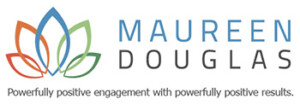This post is a ENCORE PRESENTATION of one posted on March 27, 2012. But as kids go back to school today, I thought it was worth reviewing one of the skills I wish they were taught more of in school curriculum. Given the media inundation our kids get every day, it’s important that we help them understand truth from “strategic marketing”.
Read on:
The truth hasn’t gone anywhere, it’s just very hard to see, hidden behind the “truthiness”, “spin” and lies that make up so much of the information we consume daily. According to The New York Times, we humans now process close to 34 gigabytes of information over a 12 hour period, each and everyday.
Our access to information is exponential compared to just 20 years ago – through websites, social media feeds, email, radio, television and yes, even newspapers. With such a glut of content, sensationalism in media is at an all time high. Getting it first has replaced getting it right as a journalistic value.
The line between news and entertainment (excuse me, “infotainment”), has all but disappeared. Accuracy, fairness and the simple truth have been frequent casualties of this media shift to the point where it’s hard to know what to believe. Luckily there’s help – and it’s old school. About 3,000 years ago, Greek philosopher Socrates came up with a handy method of separating fact from fiction: Critical Thinking.
Here are five simple steps to help you better assess the truth:
1. Critical thinkers don’t take media at face value. After digesting a piece of information, does it ring true for you? Is it being presented as fact or opinion? If a news story twigs your “Spidey-sense” that something is amiss, check other sources. Just because you saw it on the news doesn’t mean it’s true (remember the runaway balloon boy?).
2. Critical thinkers establish and compare the facts. When consuming media, consider if the facts being presented are reasonable and complete. Do you have all the information? Be aware that crucial information is sometimes omitted in order to support an opinion-based news story. Consistency in the facts across several stories makes the information much more credible.
3. Critical thinkers look for the holes in any argument. “Holes” refer to the ambiguity and vagueness found in unsound arguments, opinions and propositions. Look closely at what’s being said and, sometimes more importantly, what’s not being said. The “birthers” campaign around Barack Obama’s true place of birth comes to mind. With no facts to support their position, they attempted to plant doubt about his citizenship with opinion posing as fact (and Donald Trump’s hair posing as hair.)
4. Critical thinkers evaluate the facts that lead to logical conclusions/outcomes. When considering any information, you need to determine if the facts presented support the conclusion. That means figuring out whether or not what is being presented as fact is genuinely factual (e.g. We were told (not shown) that Iraq had weapons of mass destruction, so invasion was imperative). If the facts hold up to broad media and public scrutiny, chances are the conclusions will as well.
5. Critical thinkers use all five critical thinking steps and ask key questions before coming to their own fact-based conclusions. Is there clear evidence that supports the assumptions of a given argument or idea? Who gains from not telling the whole truth? Is the information presented in a rational or hysterical tone? Do the facts give weight and credibility to the argument presented? Don’t support a murky, overly simplistic, emotional, incomplete or illogical argument; and, ask to see evidence when in doubt of the facts.
Finally, critical thinkers support and pursue the truth, the whole truth and nothing but the truth. It may take a little more time than just a cursory review of the media, but in a world of half-truths, going the distance to find the full truth is essential.
Sign up for the weekly “Truth Tuesdays” blog or for a daily dose of truth, click here:





You should take part in a contest for one of the greatest blogs online.
I am going to recommend this blog!
Thanks for your kind comment. There’s so many great blogs on WordPress!